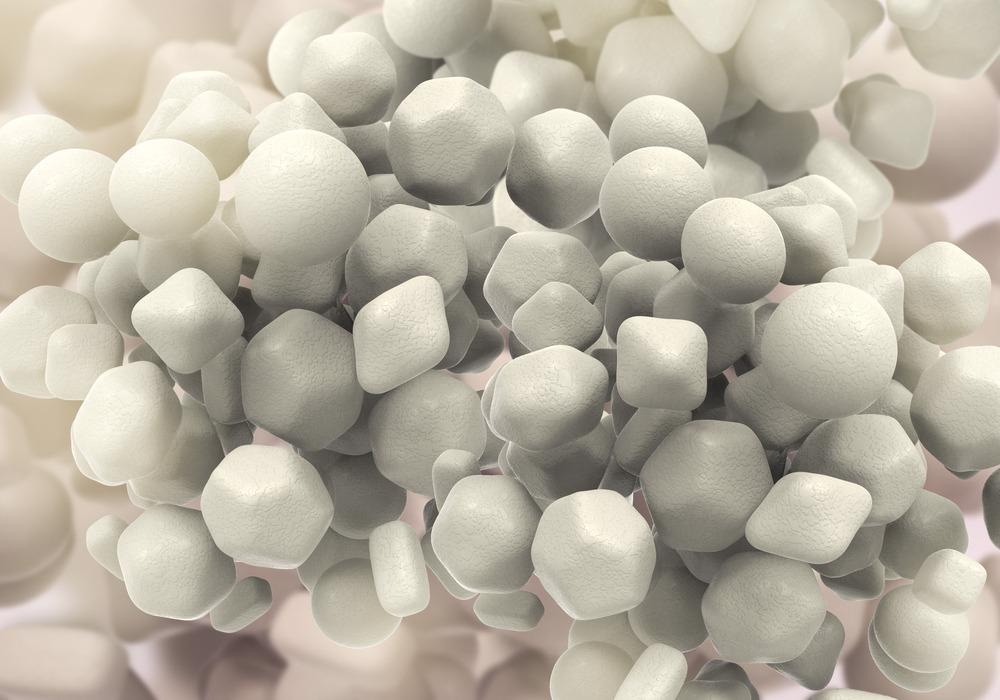
Image Credit: Kateryna Kon/Shutterstock.com
Izon Science, a leading nanotechnology manufacturer, has announced its latest nanoparticle measurement system, the Exoid. The Exoid device measures complex nanoparticle information using next-generation Tunable Resistive Pulse Sensing (TRPS) technology.
The improved precision and accuracy for bio-nanoparticle analysis made possible by the Exoid will lead to the opening up of new research areas in nano-biological sciences such as virus research, including the global scientific effort to tackle coronavirus.
Next-Generation Nanoparticle Measurement System from Izon Science
The new Exoid device measures size, concentration and charge with high degrees of precision and accuracy. Announcing the product, Izon Science CEO Hans van der Voorn said:
“We’re excited that after years in development, the Exoid is now rolling out globally. The improved workflow and sensitivity will be a big step up for researchers working to solve nano-scale problems. It is aimed squarely at providing accuracy, reproducibility and a ‘real’ measurement.”
The Exoid will replace Izon Science’s previous industry-leading nanoparticle measurement system, the qNano. The qNano gained industry recognition over 10 years for providing the highest resolution and most accuracy for complex bio-nanoparticle analysis available. It was used by thousands of scientists in 45 countries and features in approximately 1,500 scientific publications.
What is New in the Exoid Device?
Among the major upgrades in the Exoid is a significant reduction in signal noise, enabling much-improved performance compared to the previous qNano device. This is achieved with more precise hardware as well as smarter software in the Exoid TRPS device.
A software update later this year will make the Exoid the first-ever device capable of three-dimensional modeling of nanoparticle size, concentration and zeta potential.
Three-dimensional measurements of particle size, concentration and charge will be a world-first. When we release this functionality … we expect it to be a transformational development for a number of research areas."
Hans van der Voorn, CEO, Izon Science
This combined software and hardware improvement will also bring TRPS technology forward significantly. New CPUs and electronics were added to the new Exoid device, allowing more automation to replace user input in previous versions of the technology.
Automatic processes can now carry out optimizations without user input required. Baseline current, applied pressure and blockade size are monitored so that automatic optimizations give the best possible analysis. “Previously this level of precision came with a steep learning curve and user skill, but the Exoid is much easier to operate than the qNano,” said van der Voorn.
How Does Tunable Resistive Pulse Sensing (TRPS) Work?
TRPS enables objective, quantified nanoparticle analysis as each nanoparticle in the suspension sample is counted. It works by suspending polydisperse nanoparticles in electrolyte material. The material is then pulsed through a nanopore using pressure and electric current. Discrete nanoparticles are isolated and identified by sensors in the device.
This method is tunable in various metrics: the stretch of the nanopore can be adjusted, limiting the possible flow rate through the nanopore; pressure can be tuned, which also affects the flow rate; and voltage can be tuned so that the nanopore attracts particles with different surface charge or polarity.
Van der Voorn said, “The precision of particle-by-particle charge measurement in particular is now at a new level, never seen before. The potential applications of that aspect are not fully known yet.”
Bio-Nanoparticle Analysis for Advanced Medical Research (and the Coronavirus Pandemic)
Izon Science has blue-chip research customers worldwide in more than 50 countries and each of the top ten medical research institutes on the planet. In addition, the company provides analysis products for 9 out of the top 10 global pharmaceutical companies and 49 of the top 50 universities in the US.
Izon Science manufactures and supplies measurement tools with nano-scale levels of precision and accuracy and equipment for nano-biological separation needed for advanced medical research.
Researchers use Izon Science nanotechnology tools for virus characterization and concentration analysis to understand viruses such as COVID-19.
The Exoid device will allow for more research of more complex bio-nanoparticles such as extracellular vesicles (EVs), viruses, liposomes, and products from the field of nanomedicines. The full scale of its impact will become known in the coming decade.
Van der Voorn concluded, “With the launch of the Exoid we expect TRPS to become the global standard for bio-nanoparticle analysis – given that it is the only accurate method for measuring the three fundamental properties of complex nano-bio particles, being size, charge and concentration.”
References and Further Reading
Pei, Yiwen, Robert Vogel and Caterina Minelli (2020) Tunable Resistive Pulse Sensing (TRPS). Characterization of Nanoparticles. [Online] https://doi.org/10.1016/b978-0-12-814182-3.00009-2.
Maas, Sybren L. N., Marike L. D. Broekman and Jeroen de Vrij (2016) Tunable Resistive Pulse Sensing for the Characterization of Extracellular Vesicles. Methods in Molecular Biology. [Online] https://doi.org/10.1007/978-1-4939-6728-5_2.
Izon Science (2021) Izon Science Launches the Exoid to Transform Nanoparticle Measurement. Izon Science. [Online] https://www.izon.com/news/izon-science-launches-the-exoid-to-transform-nanoparticle-measurement.
Disclaimer: The views expressed here are those of the author expressed in their private capacity and do not necessarily represent the views of AZoM.com Limited T/A AZoNetwork the owner and operator of this website. This disclaimer forms part of the Terms and conditions of use of this website.